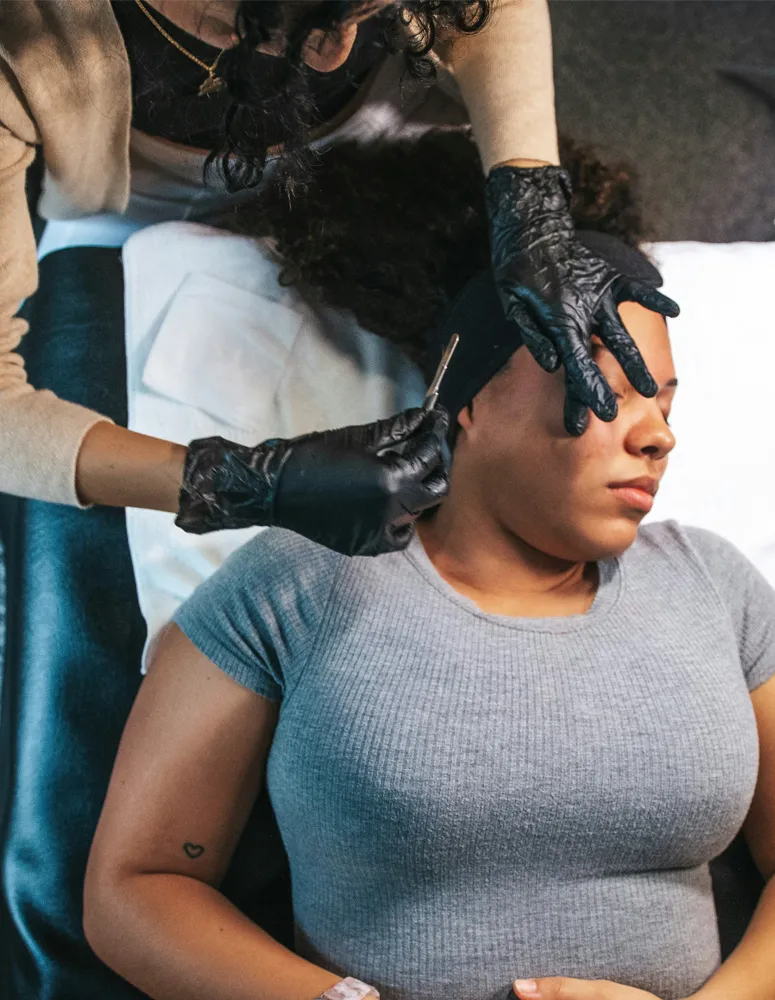Unveiling radiant skin: The ABCs of dermaplaning, HydraFacials, and microneedling
A three-part skincare miniseries
Skincare technology continues to develop treatments to deliver flawless, youthful skin, smooth skin texture, increase absorption capacity, stimulate collagen production, and more. Three of the newest and most popular facial treatments are dermaplaning, HydraFacials, and microneedling. Each is a skincare powerhouse in its own right, but how do they differ? Who needs which treatment, and when? In a three-part skincare miniseries, we’ll cover everything you need to know.
Dermaplaning: For smooth, velvety skin
Dermaplaning is a non-invasive, shaving-like procedure designed to reveal smooth, luminous skin. A skilled practitioner employs a surgical scalpel to delicately scrape away the outer layer of dead skin cells and fine vellus hair, more commonly known as peach fuzz. This exfoliation uncovers a fresh complexion and also enhances the absorption of skincare products, allowing them to penetrate more effectively.
The benefits of dermaplaning include:
- Immediate smoothing: Dermaplaning provides instant gratification by smoothing away fine lines and leaving the skin with a velvety texture.
- Enhanced product absorption: By removing the outer layer of dead skin cells, skincare products are better absorbed, maximizing their efficacy.
- Flawless makeup application: No more caking foundation as dermaplaning creates a flawless canvas, allowing makeup to glide on effortlessly.
Despite what you may have heard, dermaplaning does NOT result in stubble, nor make your “peach fuzz” grow back thicker or darker.
The drawbacks of dermaplaning are:
- Cost. Because dermaplaning is typically performed in a salon by a skilled technician, it can cost anywhere from $100 – $350.
- Repeated treatments to maintain results. Depending on how fast your hair grows, you may need to schedule another treatment in three weeks to three months.
- The potential to worsen skin conditions such as rosacea or keratosis pilaris. Dermplaning also should not be done during an acne breakout or on sunburned skin.
Due to the cost and need for regular treatments, many people ask about at-home dermaplaning. Although the technology is available, it is not recommended. Here’s what you should know:
- At-home dermaplaning tools are not as sharp as an in-clinic treatment and won’t exfoliate as deeply.
- The right tool is essential to a safe and effective treatment. You want a scalpel-like, sterile blade to reduce the risk of irritation or infection. And, since you’ll change blades frequently, you’ll need more than one.
- Cleanse thoroughly, again to avoid the risk of infection.
- Take it slowly and gently. Hold the tool at a 45-degree angle to the skin, use your other hand to hold the skin taut, and make slow, gentle strokes across the face, removing dead skin and fuzz.
- Follow with skincare, such as a hydrating serum or moisturizer, and it’s especially crucial to add sunscreen as your skin will be more susceptible to burning.
How does dermaplaning differ from dermabrasion (or microdermabrasion)?
Both are exfoliating treatments; however, dermaplaning requires the use of a scalpel to remove dead skin and peach fuzz, while microdermabrasion uses micro-crystals and suctioning to physically exfoliate the dead skin off your face, without having any effect on your fuzz. Essentially, dermaplaning is better for hair removal and light exfoliation, while microdermabrasion is better for a more intense exfoliation.
As always, I recommend consulting with your dermatologist if you are considering trying one of the treatments we cover in this mini-series.
Of course, you can also achieve these results by building your beautiful skin from the inside out—by eating your water, exercising, managing your stress, and nurturing your skin with quality skincare products—with the understanding that eventually, inevitably, the wrinkles will win.
But it’s always nice to have options. And I’m glad to see that the beauty industry is responding to the growing desire of so many people to unlock the full potential of their skin, revealing a luminosity that, ideally, radiates from within.
